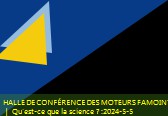
NASA confirms success in bringing back samples from asteroid Bennu
Dust samples from « the most dangerous known rock in the solar system » have been brought to Earth.
The air and space agency loaded the material into a capsule that landed in the western desert of Utah.
The samples were taken from the surface of the asteroid Bennu in 2020 by the Osiris-Rex spacecraft.
The air and space agency wants to learn more about this mountainous object, especially because it has the potential to hit our planet within the next 300 years.
But more importantly, these samples have the potential to provide new insights into the formation of our solar system 4.6 billion years ago, and possibly even the origin of life on our world.
Osiris Rex: Asteroid Bennu ‘is a journey back to our origins’
Everyone cheered when the « Osiris-Rex » team saw their capsule through a remote camera.
The landing was confirmed on desert land belonging to the Department of Defense, three minutes ahead of schedule.
The car tire-sized capsule whizzed into the atmosphere at more than 12 kilometers per second (27,000mph) over the western United States. A heat shield and parachute slowed its descent and landed it gently and perfectly on the restricted ground.
« This little capsule understands this mission, » said Tim Pritzer, chief engineer at aerospace manufacturer Lockheed Martin Corp. It’s feather-like. »
When asked how the capsule was retrieved from the desert, some of the rescuers who returned by helicopter told The News’ science team it was « great. »
« I cried like a baby in that helicopter when I heard the parachute had opened and we were making a soft landing, the lead researcher said.
« It was an overwhelming moment for me. It’s an amazing accomplishment.
Scientists are eager to get their hands on the precious cargo, estimated at about 250 grams (9 ounces) before landing.
That may not sound like a lot – the weight of an adult hamster, as one scientist described it – but it was more than enough for the type of testing the team wanted to do.
« We can analyze very small particles at very high resolution, » said the lead scientist at NASA’s Johnson Space Center in Texas.
« We know how to slice and dice a 10-micron-sized particle into a dozen or so slices, and then map it grain-by-grain on the nanoscale. So 250 grams is huge.
Clean is the mantra in the desert. When the rescue team caught up with the capsule on the ground, they were motivated to get it back to a makeshift clean room at a nearby army base as quickly as possible.
If, as researchers believe, the samples contain carbon compounds that may have been involved in the creation of life, it is important to avoid mixing the rocky material with today’s geochemistry.
« Spacecraft cleanliness and prevention of contamination have always been very stringent requirements of the mission, » said the deputy program manager.
« The best way for us to protect our samples is to take them as quickly as possible from the field to the clean lab we have set up in the hangar and obtain them under pure nitrogen purge. Then it’s safe.
This was achieved locally, just four hours before landing.
The lab team disassembled the capsule and removed the heat shield and back cover, but left the sample safely inside the internal tank.
It will be flown to a dedicated facility in Johnson on Monday, where analysis of the samples will begin.
British scientist Ashley King will be part of a six-person « quick look » team that will conduct the initial assessment.
« I’m expecting to see a very soft, very fragile rock-type material, » the Natural History Museum expert said.
« It’s going to have clay minerals – silicate minerals that have water locked up in their structure. Lots of carbon, so I think we’ll probably see carbonate minerals, and maybe some of those things we call spherules, and calcium-aluminum inclusions, which were the first solid materials to form in our solar system.
NASA plans to hold a press conference later to give the first assessment of what has been returned. Small specimens will be distributed to relevant research teams around the world. They hope to report on extensive research within two years.
« One of the most important parts of the sample return mission is that we get 75 percent of the sample, and we’re going to lock it down for future generations, for people who weren’t even born yet, working in labs that don’t exist today, using instruments we haven’t even thought of yet, » NASA’s director of planetary science.



